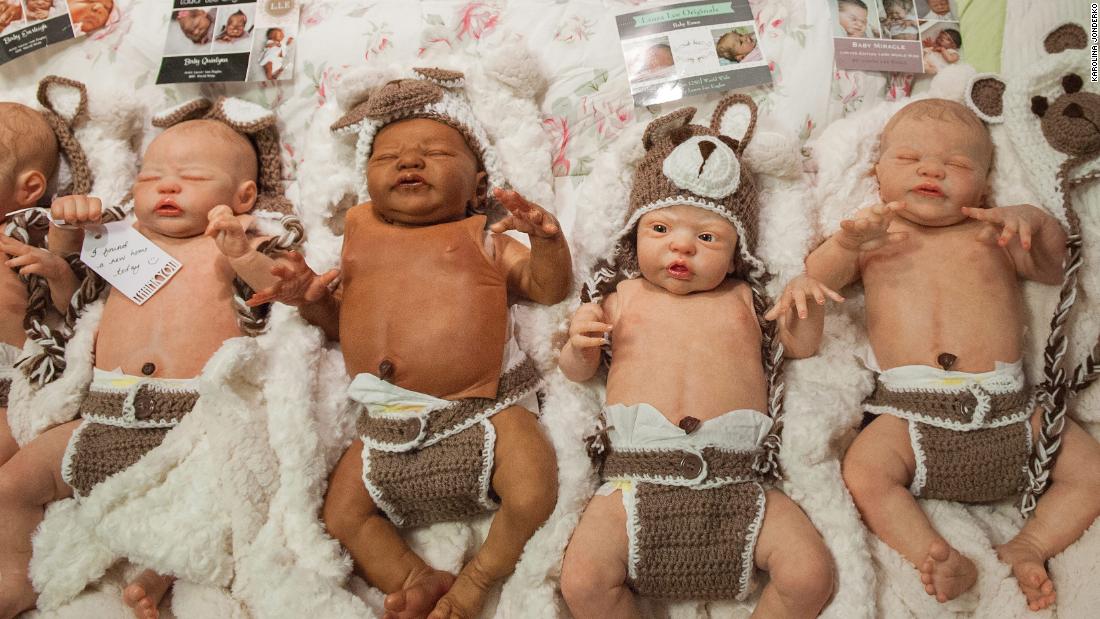So Sad: Dolls That Feel Too Real – The Emotional Toll of Collecting Silicone Reborn Babies
So Sad: Dolls That Feel Too Real – The Emotional Toll of Collecting Silicone Reborn Babies
In recent years, a peculiar and growing trend has emerged: the collection of silicone reborn baby dolls. These incredibly lifelike dolls, meticulously crafted to resemble real infants, have become an object of fascination for some. For others, they serve as an emotional substitute, filling the void left by loss, grief, or unfulfilled desires. While the dolls themselves are undeniably impressive in their craftsmanship, a closer look at the phenomenon reveals an unsettling emotional toll on some collectors.

The Allure of the Reborn Baby Doll
Reborn dolls are not just toys – they are works of art. Made from soft silicone and often hand-painted with painstaking attention to detail, these dolls are designed to look and feel like real babies. Their tiny fingers, delicate features, and even realistic skin tones make them astonishingly lifelike. Many collectors cherish them for their beauty, but for others, the dolls provide something more: comfort, companionship, and a way to process complex emotions.
For some people, these dolls represent a tangible outlet for grief. Parents who have lost children may find solace in a reborn baby doll, using it as a way to preserve the memory of their lost child or to fill the aching void left by their absence. Others who have faced infertility, stillbirth, or miscarriage may look to the dolls as a form of healing, imagining them as the child they never had.
The Emotional Toll
While the appeal of these dolls can be deeply personal, there is growing concern over the emotional toll they may take on collectors. Experts warn that using these dolls as substitutes for real human connections can lead to emotional isolation. For those already grappling with grief, the dolls may exacerbate feelings of sadness and emotional detachment. The lifelike appearance of the dolls can blur the lines between reality and fantasy, causing some individuals to form unhealthy attachments or even see the dolls as “real” children.
Dr. Eleanor Bradford, a clinical psychologist who has studied the effects of grief and attachment on mental health, explains, “When people use inanimate objects to fill emotional voids, it can stunt their ability to process grief and move forward. Instead of healing, they may become more entrenched in their sorrow. The dolls may offer temporary comfort, but they can ultimately delay the important work of emotional recovery.”
A Dangerous Obsession?
In extreme cases, some collectors develop an obsessive relationship with their reborn dolls. These individuals may dress them, take them on outings, and even treat them as if they were real babies. Some have been known to refer to their dolls as “children” and may create entire social media profiles for them, sharing photos and updates. While some find harmless joy in these activities, others may cross a line into unhealthy fixation.
What begins as a hobby or a coping mechanism can spiral into an emotional dependency. This is especially concerning for individuals who already struggle with mental health challenges. For these people, reborn dolls may become a substitute for human interaction, reinforcing feelings of loneliness, alienation, and depression.
Ethical and Societal Implications
The rise of reborn dolls also raises broader ethical and societal questions. Many argue that the commodification of grief – turning the process of mourning into a marketplace of lifelike objects – can be damaging. It may blur the lines between genuine human emotion and consumerism, turning a deeply personal experience into a commodity.
Moreover, there is growing concern that these dolls may perpetuate unrealistic ideals about parenthood. Collectors may project their desires for a perfect child onto the dolls, leading to an unhealthy fixation on idealized, unattainable notions of parenting.
Samantha Field, a grief counselor, observes, “While I understand the desire to hold onto the memory of a lost child, these dolls can sometimes provide an illusion of control. They offer an escape from the painful process of accepting reality. But grief is a natural part of life, and avoiding it can prevent individuals from truly healing.”
A Growing Market
Despite these concerns, the market for silicone reborn dolls continues to grow. These dolls can cost thousands of dollars, and the community surrounding them is active and dedicated. Reborn doll conventions and online groups provide collectors with a space to bond over their shared passion, often exchanging tips on doll care or showing off their latest acquisitions. For many, the dolls offer a sense of purpose or belonging in a world that feels increasingly disconnected.
However, as the market for reborn dolls expands, it raises the question of whether society is becoming too comfortable with using objects as emotional substitutes. Are we allowing people to retreat further into isolation, or are we offering them a space to express deep, unprocessed emotions?
Moving Forward
Ultimately, the emotional toll of collecting silicone reborn baby dolls is a complex issue. For some, these dolls provide much-needed comfort and healing, offering a way to process grief or cope with loneliness. For others, the dolls may reinforce unhealthy emotional patterns or contribute to an ongoing sense of isolation.
If this trend continues to grow, it is essential that we remain vigilant about the emotional needs of those who are drawn to this market. For individuals struggling with grief, depression, or other mental health issues, seeking professional support and forming real-world connections are crucial steps toward healing.
While silicone reborn dolls may provide temporary solace, they can never replace the warmth of human touch, the understanding of close relationships, or the comfort of genuine companionship. As we continue to navigate the emotional complexities of grief and loss, it is important to remember that healing comes from within – not from the lifelike embrace of a doll.











Post Comment